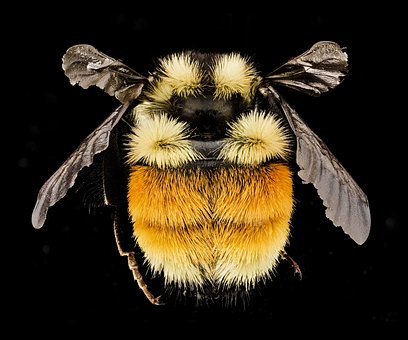Archived Blogs
|
In 2017, there was an interesting story published about the “windshield phenomenon”. Motorist were noting that, despite long summertime traveling vacations, they weren’t having to stop to clean their windshields as often. When I thought about it, I remembered having to clean not only my windshield, but the grill of my car and my headlights too. Yuck.
I could call this phenomenon the Canary in the coal mine but I’ll save that idiom for later. The declining bug population has been recognized and studied for some time. In 2004, a ‘splatometer’ was applied to the front of cars to measure the bug population. One splat was recorded for roughly every 5 miles. This study has not been replicated so I’m afraid I can’t tell you the current splat ratio. Any splat testers out there? Why in the world would you care about the decline in the bug population? Less mosquitoes? That’s ok with me. Less flies? Won’t miss them either. Less bees? Wait a minute. I like bees. And you should too. Insects are facing the most massive extinction of species since the dinosaurs...and it could have an impact on our food chain. Bees are the pollinators for 75% of our crops and much of the food we eat depends on bees. So what’s happening to the bees? (I should point out that I’m talking about bumble bees, not honey bees. If you’re interested, you can see the difference here.) The short answer is : Us Let me explain. Diseases and parasites are killing the bees. A parasitic mite, the Varroa destructor, is hurting the bee population in the US. While it sounds like the name of a video game villain, you can see the real parasite here. The Nosema Ceranae , this one a fungus, is hurting the European population. Infections aren’t our fault, right? Actually, experts believe that toxic chemicals are affecting the bee’s ability to resist these diseases and parasites. Toxic chemicals like insecticides. Even at sublethal doses, like those found when the plant absorbs the chemicals, insecticides affect the navigation system and learning behaviors of insects that feed on the plants. Did you know that pollen, the main form of protein for a bee, has an average of 7 pesticides in it? Lastly, climate change is causing increased temperature extremes and changing rainfall patterns and that’s having effects on every species of insects and animals. That’s our fault too. Back to that Canary in the coal mine reference. We’re not the only species at risk. Hans de Kroon, a German scientist, noted that a specific bird population is at risk due to the declining insect population. But how did they prove it? They compared museum specimens of Whip-poor-wills from many years ago to birds living now and discovered a difference in the chemical make up of their claws and feathers. Based on their research, living birds are not eating the same bug content and it’s having an impact. The Whip-poor-wills won’t be the only bird affected. The same problem is likely to affect other insect eaters like nighthawks, swifts and swallows. Beautiful, graceful birds. What can anyone do? If you live in a home, add plants to your landscape that are friendly to bees. Plants like: Lavender, sunflower Heather, Sage, Asters, Rosemary, Oregano and mint. You might want to also add plants that repel mosquitoes. Plants like: Lavender, basil, lemon balm, marigolds and lemon grass (Did you know that the oils from the the lemon grass plant are used to make citronella?) Stop using insecticides and buy more organic foods. If the idea of saving bees doesn’t motivate you… What about fireflies? After all, they’re half-magic and we all need a bit of enchantment in our lives.
0 Comments
Leave a Reply. |
Archives
October 2020
Categories |
COPYRIGHT 2017 SUSAN BADARACCO | Site Credits



 RSS Feed
RSS Feed